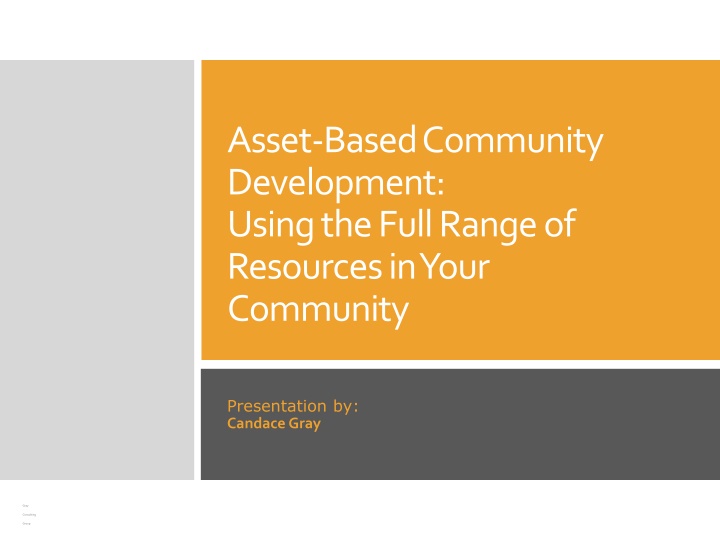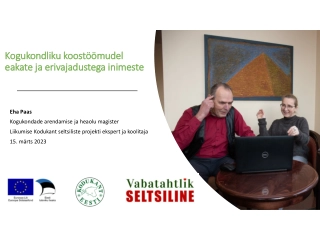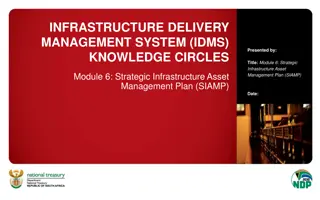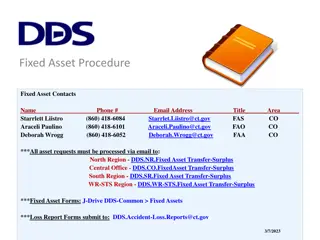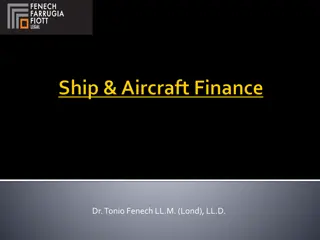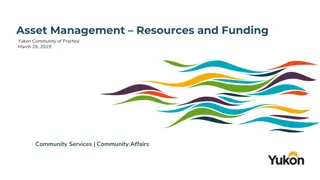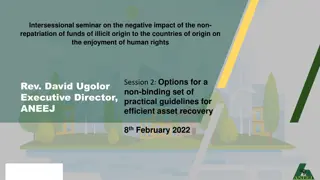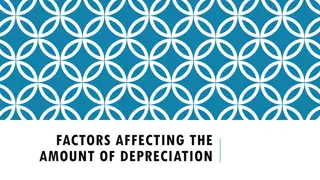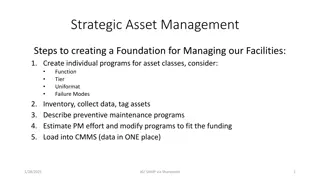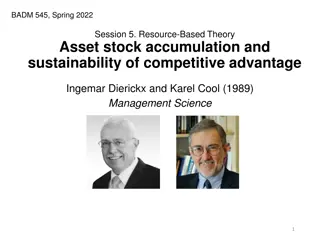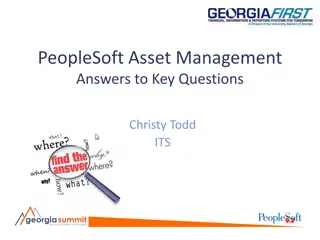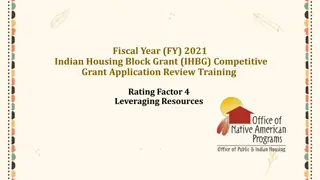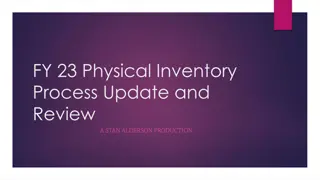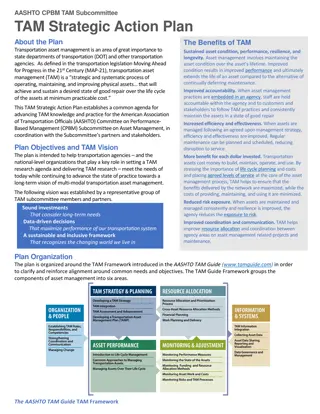Asset-Based Community Development: Leveraging Community Resources
This presentation by Candace Gray explores Asset-Based Community Development (ABCD) and how it empowers communities by utilizing their resources for sustainable growth and development. Learn about the history, key concepts, and benefits of ABCD, and discover how it differs from needs-based approaches.
Download Presentation

Please find below an Image/Link to download the presentation.
The content on the website is provided AS IS for your information and personal use only. It may not be sold, licensed, or shared on other websites without obtaining consent from the author.If you encounter any issues during the download, it is possible that the publisher has removed the file from their server.
You are allowed to download the files provided on this website for personal or commercial use, subject to the condition that they are used lawfully. All files are the property of their respective owners.
The content on the website is provided AS IS for your information and personal use only. It may not be sold, licensed, or shared on other websites without obtaining consent from the author.
E N D
Presentation Transcript
Asset-Based Community Development: Using the Full Range of Resources in Your Community Presentation by: Candace Gray NRC Gray Consulting Group
Introduction Opening Discussion Questions: How much experience have you had with Asset-Based Community Development? What questions would you like answered during the webinar? Asset-Based Community Development
Introduction Learning Objectives After completing the webinar, participants will be able to: Describe the basic concepts of Asset-Based Community Development (ABCD) Distinguish between ABCD and Needs-Based approaches Articulate the benefits of the ABCD approach Understand how ABCD fits into a comprehensive approach to community development Use principles of ABCD to engage broader groups of community members and associations. Asset-Based Community Development
Overview History of ABCD Concept originally conceived by John (aka Jody) P. Kretzmann & John Mcknight They authored the Green Book , published in 1993. Since that time work has expanded around the world. Current headquarters is ABCD Institute at DePaul University in Chicago, IL. Asset-Based Community Development
Introduction Video Overview https://www.youtube.com/watch?v= PcnqtNANWVw Asset-Based Community Development
Discussion Question: What images typically come to mind when someone mentions a low-income community ? Asset-Based Community Development
Definition of Terms Community Development Programs and activities designed to improve and sustain long-term economic, social and political conditions in a designated geographic area. Asset-Based Community Development
Definition of Terms Community Assets All resources within a community that could potentially be used for the betterment of that community. Five categories of assets: 1. Gifts, skills and capacities of individuals 2. Resources of associations and community-based organizations 3. Resources of local institutions 4. Physical assets and natural resources. 5. Connections/social capital Asset-Based Community Development
Closer Examination of ABCD Three Characteristics of ABCD Asset-based Community Development is Asset-based Internally focused Relationship-driven Asset-Based Community Development
Glass Half Empty or Half Full? ABCD vs. Traditional Perspective Asset-Based Community Development
Glass Half Empty or Half Full? ABCD Approach vs. Needs-Based Approach Needs-Based Approach ABCD Approach Seeks to mobilize individual gifts, skills and capacities Views individuals as clients with needs, problems and deficiencies Community driven development Development driven by external agencies or the powers that be Relationship driven; dependent on collaborations, partnerships and broad-based community participation Dependent on one agency or a few individuals in the community who are designated as leaders Identifies community resource base before looking for external resources Builds on community organizing principle of identifying people s self- interest. Almost completely reliant on external resources, including volunteers, funding and expertise. Asset-Based Community Development
Video Pt. 2 https://www.youtube.com/watch?v= PcnqtNANWVw Asset-Based Community Development
Guiding Principles Guiding Principles for Engaging Community Assets 1. Everyone has gifts 2. Relationships build a community 3. Leaders involve others as active members of the community 4. Listening conversations can produce great outcomes 5. Questions rather than answers invite stronger action 6. A citizen-centered inside out organization is the key to community engagement 7. Institutions have reached their limits in problem solving. 8. Institutions must act as servants 9. There is no quick fix. Community change takes time 10. Community empowerment is the best means to positive community change Adapted from Mike Green of the Asset-Based Community Development Institute Asset-Based Community Development
Benefits of Asset- based Community Development Expands the community s vision of possibilities for itself and improves community esteem Taps wisdom within the community that is often overlooked Presents opportunities to use greater numbers of residents in development efforts Increases the effectiveness of community development efforts Increases the sustainability of community development efforts Increases the attractiveness of community development efforts to outside funding sources Increases the community s ability to identify its own economies and opportunities for residents Further empowers the community to define its own agenda Asset-Based Community Development
ABCD Tools: Community Asset Mapping Community asset mapping is the process of discovering community assets, connecting them to one another and mobilizing them to address community issues. The purpose of the process is to increase the community s understanding of its own potential before seeking external solutions. The key to effectively using this process is to take the information gained from the mapping process and design new applications that enhance and multiply the effectiveness of community assets. Asset-Based Community Development
Tools ABCD Tools: Community Asset Mapping Personal Capacity Inventory Associational Inventory Simple questionnaire to uncover an individual s skills, interests and willingness to be involved in community activities. Involves one person interviewing another person. Institutional Inventory Physical Resources Inventory Asset-Based Community Development
Tools ABCD Tools: Community Asset Mapping Personal Capacity Inventory Associational Inventory Simple questionnaire to uncover an individual s skills, interests and willingness to be involved in community activities. Involves one person interviewing another person. Process of surveying leaders of local associations and community-based organizations. Asks the questions: What does this group do that impacts the larger community and what activities might the group consider in the future? Institutional Inventory Physical Resources Inventory Asset-Based Community Development
Tools ABCD Tools: Community Asset Mapping Personal Capacity Inventory Associational Inventory Simple questionnaire to uncover an individual s skills, interests and willingness to be involved in community activities. Involves one person interviewing another person. Process of surveying leaders of local associations and community-based organizations. Asks the questions: What does this group do that impacts the larger community and what activities might the group consider in the future? Institutional Inventory Institutions can be a collection of assets including: facilities, personnel, materials, equipment and purchasing power. Discussions with personnel to determine their openness to partnerships and which assets they are willing to make available to the community. Physical Resources Inventory Asset-Based Community Development
Tools ABCD Tools: Community Asset Mapping Personal Capacity Inventory Associational Inventory Simple questionnaire to uncover an individual s skills, interests and willingness to be involved in community activities. Involves one person interviewing another person. Process of surveying leaders of local associations and community-based organizations. Asks the questions: What does this group do that impacts the larger community and what activities might the group consider in the future? Institutional Inventory Institutions can be a collection of assets including: facilities, personnel, materials, equipment and purchasing power. Discussions with personnel to determine their openness to partnerships and which assets they are willing to make available to the community. Physical Resources Inventory The goal of examining physical resources is to identify opportunities to turn underutilized property from liabilities to assets Asset-Based Community Development
Discussion Question: Do needs assessments serve a purpose? Asset-Based Community Development
Purpose of Needs Assessments To contribute to a comprehensive understanding of the community To provide a baseline for future evaluation To provide guidance in determining priorities Inquiring minds (i.e. funders) do want to know specific community statistics Asset-Based Community Development
Needs Assessments: Strategies for Collecting Data Census data Studies by local universities Council of government United Way reports Conducting surveys or collecting data through your organization s networks Asset-Based Community Development
Integration of Both Approaches Know Your Why! Before engaging in either community mapping or a needs assessment, determine your purpose for gathering the information: What do you want to know? How will you use the information you obtain? After obtaining the information, determine the intersection between your organization s assets and the community s needs to define your priorities. Asset-Based Community Development
Challenges to Implementing ABCD Approach Reluctance to build enduring, truly reciprocal partnerships and collaborations Inability to develop a shared vision and constructively work through conflict Inability to see the value that other individuals bring to the table Inability to see the value that other organizations bring to the table Asset-Based Community Development
Examples of ABCD in action Dudley Street Neighborhood Initiative in Boston Redevelopment of Red Bird Mall in Dallas Asset-Based Community Development
Video: Danger of a Single Story https://www.ted.com/talks/chimama nda_ngozi_adichie_the_danger_of _a_single_story?language=en#t- 16445 Asset-Based Community Development
Closing Discussion Questions What questions do you have? How will you use what you ve learned today? Asset-Based Community Development
Thank you for joining the call today! For any questions or comments, you may contact me at: Candace Gray cgray@candacegray.biz Asset-Based Community Development
